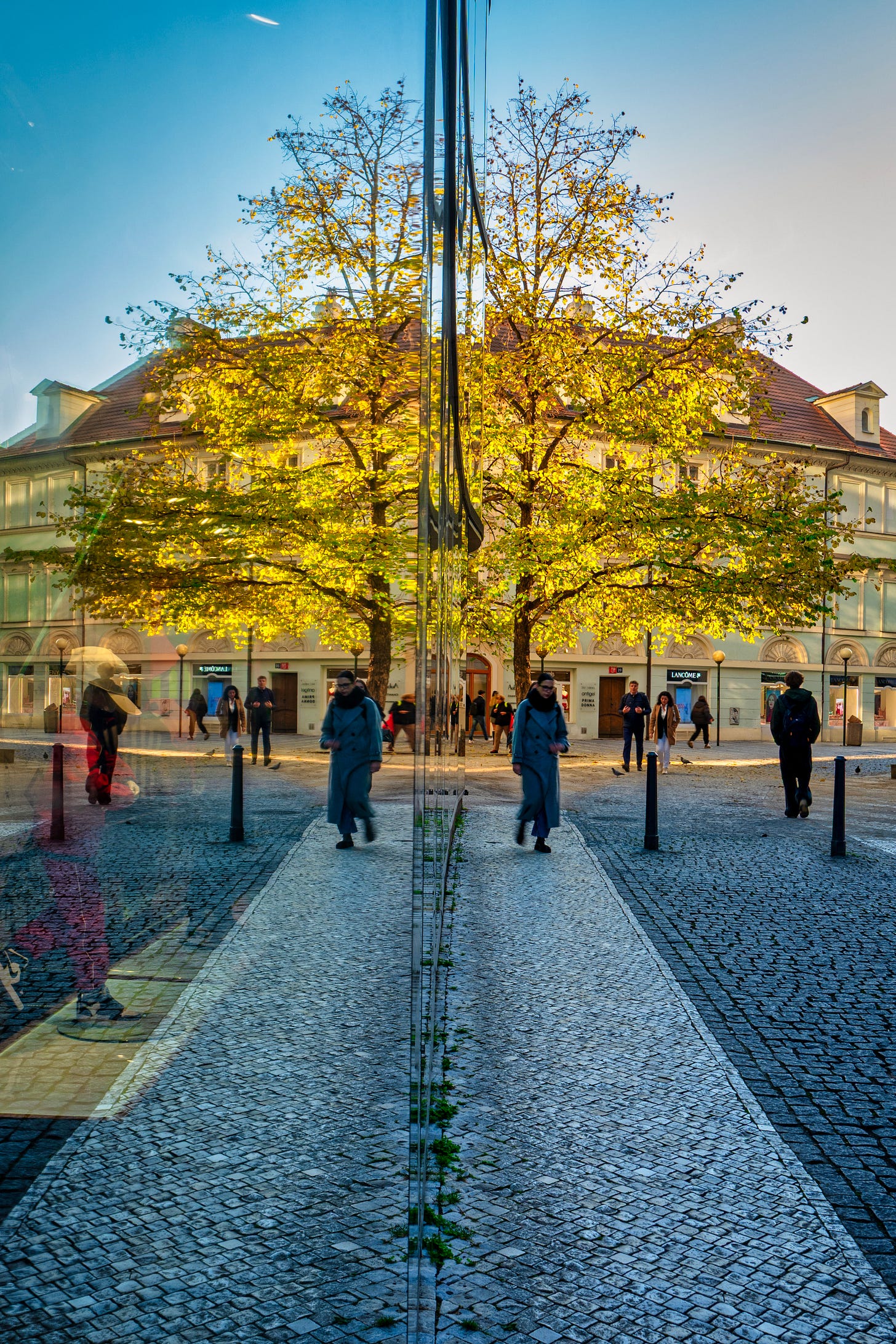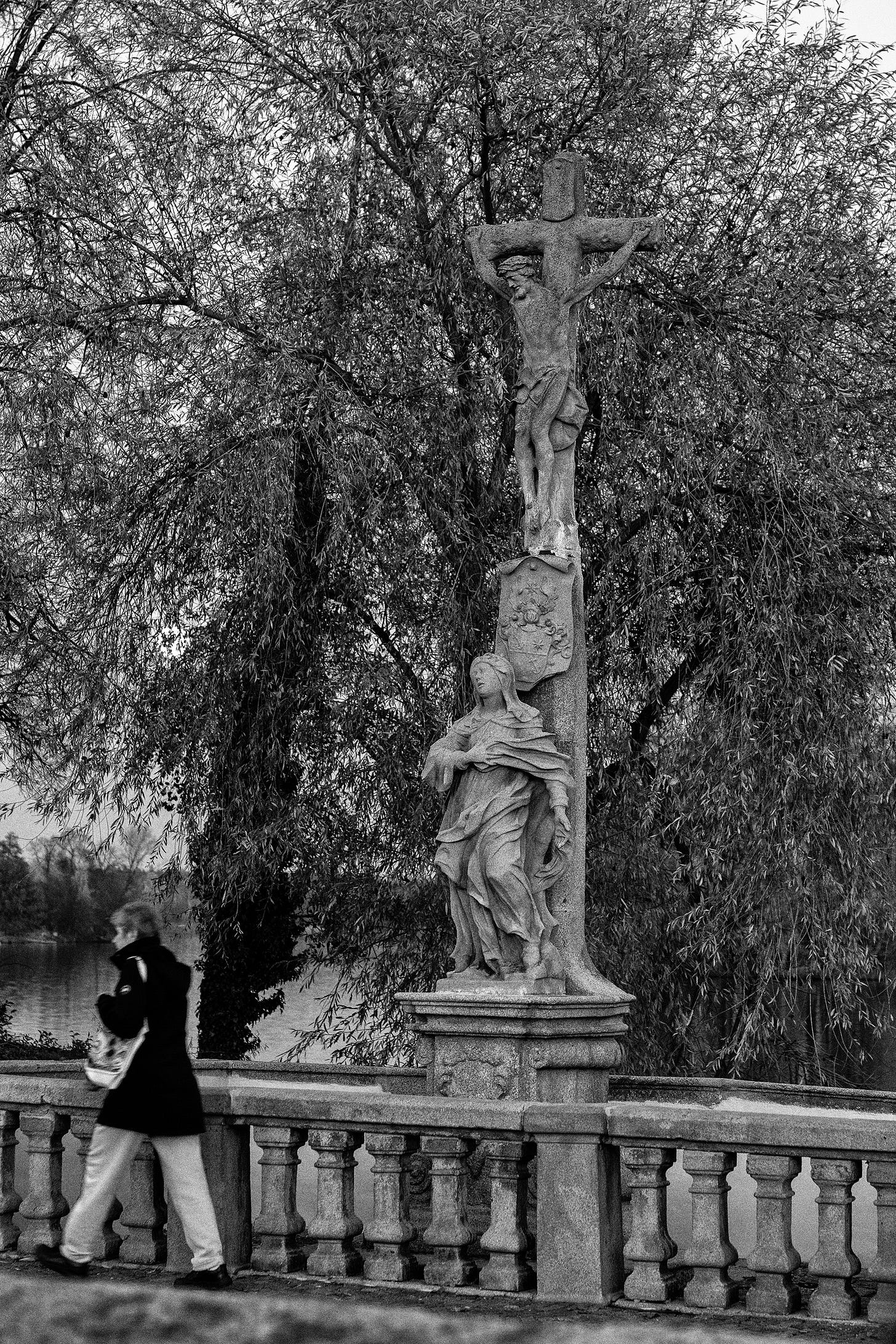How to Photograph a Place Without Repeating What Everyone Else Does
Learning to find your own frames in heavily photographed places.
When you arrive in a visually rich city like Prague, it is easy to fall into the trap of photographing the same things everyone else has already photographed. Charles Bridge, the Astronomical Clock, the castle reflected in the river. It is not that these places are unworthy. The problem is that they are so heavily photographed that your image risks becoming interchangeable with thousands of others.
This is one of the most common creative problems photographers face today. The world is full of pictures. The obvious frames are taken before you even lift the camera. So the question becomes simple and practical: how do you make work that feels like your vision, rather than a repetition of someone else’s?
Here are five principles I use every time I work in a place with a strong visual identity.
1. Go small before you go wide
Landmarks are loud. They dominate attention. If you start with the landmark, you start where every visitor stands. Instead, begin with detail and texture. Surfaces, corners, reflections, shadows, brickwork, street patterns. Move through the city as if you are studying it with your hands.
Once you have built a sense of the place at a small scale, the wider frames become more honest. They are anchored in what the place feels like, not just what it looks like.
2. Photograph edges, not centres
If a place has a central square, a famous bridge, or a well-known skyline, assume the best photographs of it already exist. Start where the city thins out. The riverbanks away from Charles Bridge. The back streets between old houses. The workshop courtyards. The tram stops no tourist steps off at.
Cities reveal themselves at the edges. This is where daily life continues without performance. If you want authenticity in the frame, do not ask the city to pose for you.
3. Commit to a focal length
Choice is the enemy of clarity. When you switch lenses constantly, you are reacting, not seeing. Pick one focal length and work with it for an entire day. This forces a language. A way of looking. It also forces you to move your body, which changes your relationship to the scene.
28 mm and 35 mm work particularly well for street and documentary work in Prague. They keep you inside the scene, not outside observing it.
4. Build sequences, not hero shots
Most photographers chase the single perfect shot. This is why most portfolios feel disconnected. Cities are stories, and stories unfold. Think in sequences. Three, five, seven frames that speak to each other. A street corner becomes stronger when paired with a face. A pattern becomes richer when followed by a wider establishing frame.
Edit with rhythm. Let one image breathe into the next.
5. Work slower than the city moves
Prague is full of movement: trams, tourists, street musicians, rivers of people crossing the same bridges. If you match that pace, you will produce surface-level images. Slow your pace down. Sit. Wait. Watch how the light shifts between one minute and the next. Your photograph should not be rushed simply because the world around you is.
The strongest frames come when you allow the city to reveal itself to you, rather than chasing it.
A final thought
You do not need to be original. You need to be attentive. Most photographers look without seeing. If you genuinely look, you are already ahead of most.
What comes next
In my paid posts, I teach the practical side of this: assignments, sequencing, how to edit a day’s work down to a coherent set, and how to apply this approach across any city or landscape.
If you are ready to move from taking isolated pictures to building photographic work with meaning and continuity, the deeper material is waiting for you inside the paid tier.




